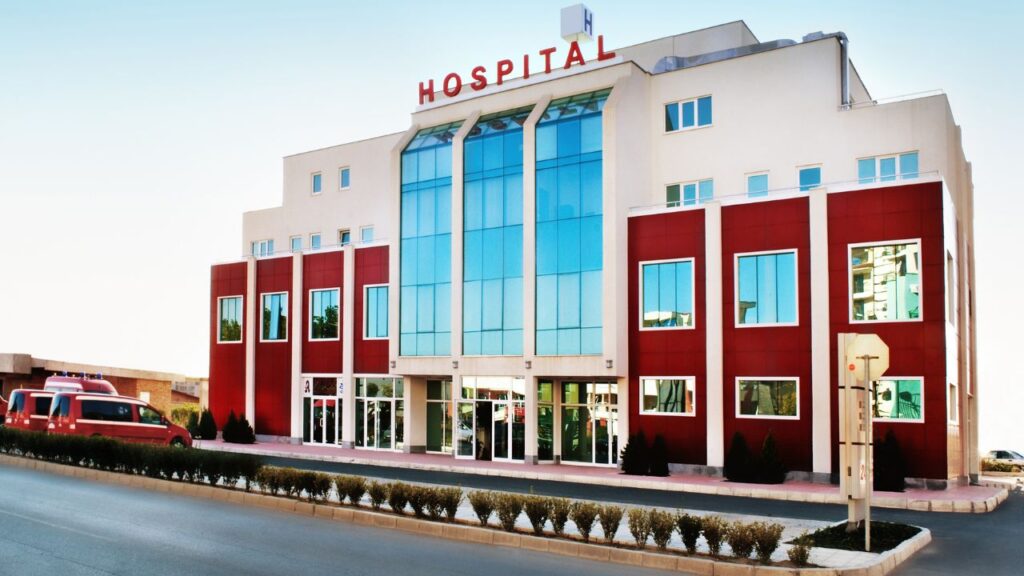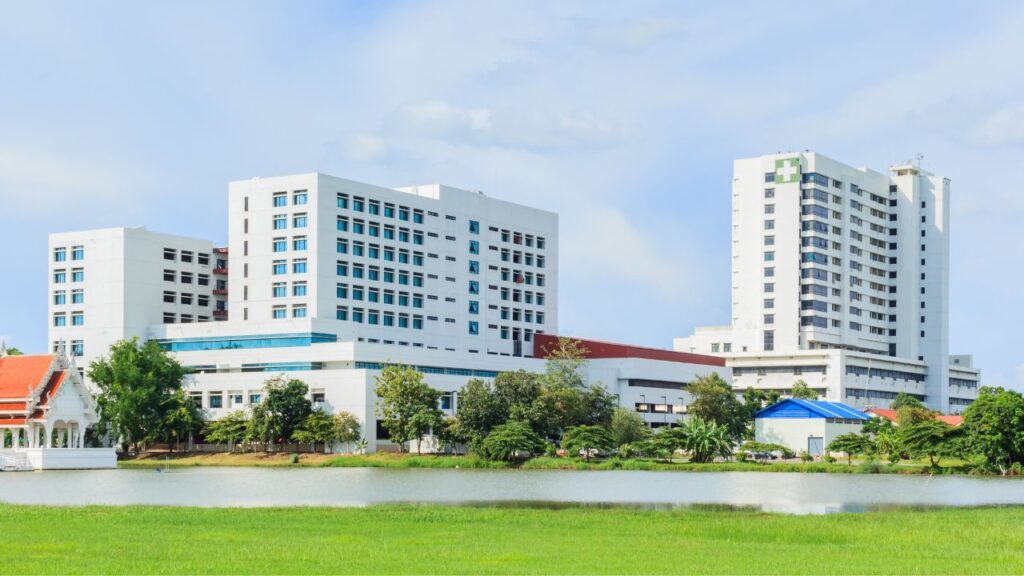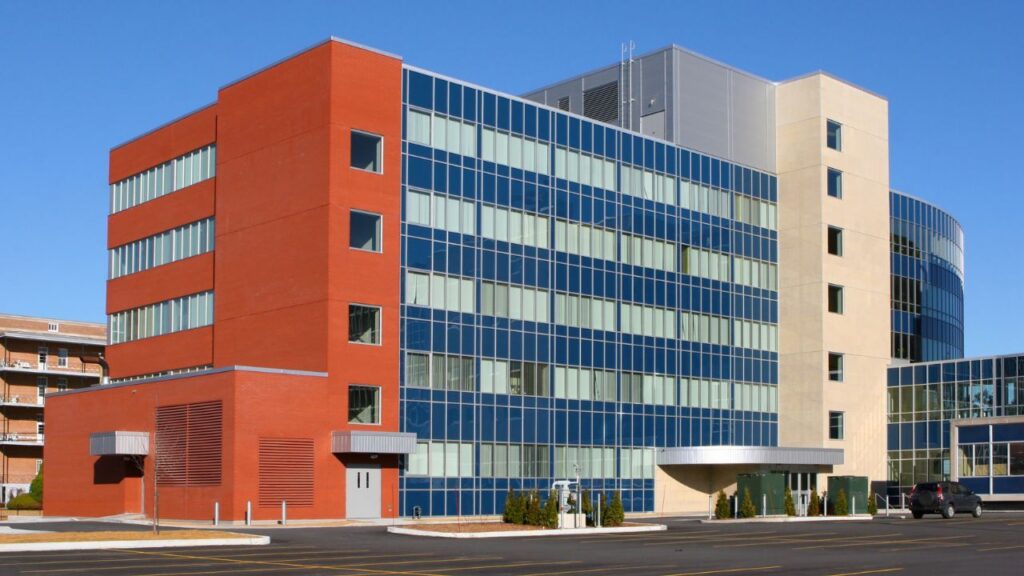Bid Strong, Bid Smart – Try Our Hospital Construction Cost Estimating Service!
- Accurancy
- Efficiency
- Transparency
- Customization
- Time Saving
- Professionalism
- Cost Control

The construction of hospital buildings involves numerous intricate processes, with concrete reinforcement standing out as a crucial component. Reinforced concrete provides the strength and durability necessary for hospital structures, ensuring they can withstand various stressors while maintaining safety standards. This article delves into the multifaceted factors that influence the cost of concrete reinforcement in hospital buildings, emphasizing the importance of strategic planning, material choices, and construction methodologies in achieving a balance between structural integrity and budget constraints.

Concrete reinforcement is vital in hospital construction due to the unique demands placed on the structural elements of healthcare facilities. Hospitals require robust and resilient structures to support the complexities of medical equipment, ensure the safety of occupants, and withstand potential seismic events. The reinforced concrete not only enhances the strength of the building but also contributes to its longevity, minimizing maintenance costs over time.

Fully Insured License
Hire Contractor For Hospital Construction

Make Informed Design Decisions Showcase Your Design Ideas
Get RenderingThe choice of reinforcement materials stands as a critical determinant of construction costs in hospital projects. Commonly utilized materials include steel rebars and mesh, with traditional steel being a prevalent option acknowledged for its commendable strength, durability, and cost-effectiveness. However, the emergence of alternatives, such as fiber-reinforced polymers (FRP), introduces a nuanced decision-making process. The advantages of FRP, including corrosion resistance, add complexity to material selection. The decision is often intricately guided by a thorough assessment of structural requirements, considerations of environmental conditions, and a foresight into long-term performance. Striking the right balance between immediate cost considerations and the potential long-term benefits of alternative materials is paramount in aligning with both the budget and the overarching goals of the hospital construction project.
The structural design complexity of hospital buildings serves as a pivotal factor influencing the costs associated with reinforcement. Hospitals, often characterized by unique architectural features, intricate layouts, and specific structural demands, necessitate a tailored approach to reinforcement solutions. The collaborative efforts of architects, engineers, and construction teams become indispensable in navigating the delicate balance between fulfilling ambitious design aspirations and implementing cost-effective reinforcement strategies. The challenge lies in harmonizing the aesthetic and functional requirements of the hospital’s design with the financial constraints, ensuring that the selected reinforcement solutions not only meet structural needs but also align with the project’s overall budgetary parameters.
Particularly critical for hospitals situated in seismically active regions, seismic considerations introduce a layer of complexity to reinforcement costs. Stringent seismic codes mandate additional measures in the seismic design of reinforced concrete structures to enhance their ability to withstand earthquakes. While the incorporation of seismic-resistant features undoubtedly contributes to increased construction costs, it is non-negotiable when prioritizing the safety and resilience of the hospital building.

The challenge lies in navigating the delicate equilibrium between adhering to seismic codes, implementing robust reinforcement strategies, and managing the associated costs to ensure that the hospital structure stands resilient in the face of potential seismic events.
The chosen construction methodology significantly influences the costs associated with reinforcement. Decisions regarding on-site versus precast construction, the intricacy of formwork, and the efficiency of installation processes all contribute to the overall expenses. Innovative construction methods that enhance efficiency while maintaining the quality of reinforcement installations can lead to substantial cost savings. The dynamic nature of this decision-making process requires a careful evaluation of the trade-offs between different construction methodologies, considering factors such as speed of construction, labor requirements, and overall project cost. Striking the right balance is essential for optimizing costs without compromising the integrity of the reinforced concrete structures.
The scale and timeline of a hospital construction project wield a direct impact on reinforcement costs. Larger structures inherently demand more reinforcement material and increased labor, contributing to higher overall expenses. Strategic project management becomes imperative in ensuring efficient use of materials and adherence to construction schedules. The delicate balance between project scale and timeline dictates the efficiency of resource allocation, construction progress, and ultimately, the control of costs without compromising the structural integrity of the hospital building. Proactive planning and meticulous execution are paramount in navigating the intricacies of large-scale projects, ensuring that the reinforcement process aligns with both the project’s scope and its defined budget constraints.
Concrete reinforcement costs for hospital buildings can vary widely based on the factors mentioned above. On average, the cost can range from $4 to $12 or more per square foot. This estimate includes the expenses associated with material procurement, labor, and the implementation of specialized reinforcement techniques.

The efficient selection of reinforcement materials is a cornerstone in managing construction costs effectively. Striking a delicate balance between factors such as strength, durability, and corrosion resistance is paramount. While the immediate budget constraints are crucial considerations, a forward-thinking approach involves evaluating the long-term benefits of the chosen materials. Opting for reinforcement materials that align with both functional requirements and financial objectives ensures a cost-effective solution that contributes to the overall success of the hospital construction project. The intricate dance between immediate costs and long-term performance underscores the importance of thorough material selection processes in achieving an optimal balance in the construction of reinforced concrete structures.
The integration of advanced construction technologies introduces a transformative dimension to the cost-efficiency of reinforcement processes. Embracing technologies like Building Information Modeling (BIM) and prefabrication has the potential to streamline construction, reducing labor costs and improving overall efficiency. BIM facilitates a comprehensive digital representation of the project, enhancing collaboration and minimizing errors. Prefabrication, on the other hand, allows for the manufacturing of reinforcement components off-site, leading to quicker on-site assembly. The incorporation of these advanced technologies presents an opportunity to not only enhance efficiency but also to contribute to substantial cost savings throughout the hospital construction project.
In regions prone to seismic activity, investing in innovative seismic-resistant design solutions becomes a strategic imperative, even if initial costs may be higher. The long-term savings achieved by minimizing the risk of damage during seismic events outweigh the immediate expenditures. Collaborating closely with structural engineers to implement advanced seismic design strategies ensures that the hospital building is fortified against potential seismic challenges.

While the upfront investment may seem substantial, the proactive integration of these design innovations stands as a testament to a commitment to safety, resilience, and overall cost-effectiveness in the face of seismic risks.
Conducting a comprehensive lifecycle cost analysis is an invaluable tool in assessing the overall cost-effectiveness of reinforcement materials and construction methodologies. While initial costs are undeniably crucial, a holistic view that considers maintenance, repair, and replacement expenses over the building’s lifespan provides a more accurate measure of long-term cost-effectiveness. This approach encourages a shift from a short-term mindset to a more strategic and sustainable perspective, ensuring that the chosen reinforcement materials and construction methods align not only with immediate budget constraints but also with the overarching financial goals of the hospital construction project.
Thorough project planning, efficient resource utilization, and strict adherence to construction schedules stand as pillars of effective cost optimization in the construction of reinforced concrete structures. Implementing lean construction principles, which prioritize efficiency and waste reduction, contributes significantly to overall cost-effectiveness. Minimizing construction delays through proactive planning and meticulous project management ensures that resources are utilized optimally, preventing unnecessary expenditures. The orchestration of construction processes, from material delivery to on-site assembly, requires a strategic and synchronized approach to mitigate potential cost overruns and maintain the delicate balance between construction efficiency and financial prudence.
The construction of hospital buildings demands a careful balance between the need for robust concrete reinforcement and the necessity to manage costs effectively. The significance of selecting the right materials, considering design complexities, seismic requirements, construction methodologies, and project scales cannot be overstated. Concrete reinforcement plays a vital role in ensuring hospitals stand resilient against various stressors, providing a secure environment for medical activities.
To optimize costs, strategies such as material efficiency, leveraging advanced construction technologies, implementing seismic-resistant design innovations, conducting lifecycle cost analyses, and meticulous construction planning are indispensable. These approaches not only address immediate budget constraints but also contribute to the long-term sustainability and cost-effectiveness of hospital construction projects. Ultimately, the emphasis on safety, efficiency, and strategic decision-making underscores the broader goal of constructing hospitals that are not only structurally sound but also economically viable over time.
The cost of concrete reinforcement in hospital construction is influenced by several factors, including material selection, design complexity, seismic considerations, construction methodology, and the scale and timeline of the project. These factors collectively impact expenses associated with labor, materials, and specialized construction techniques.
The choice of reinforcement materials, such as traditional steel rebars, mesh, or alternatives like fiber-reinforced polymers (FRP), plays a crucial role in determining costs. The decision involves considering factors like strength, durability, and environmental conditions. Striking a balance between immediate cost considerations and the potential long-term benefits of alternative materials is essential.
Seismic considerations are particularly critical for hospitals in seismically active regions. Stringent seismic codes mandate additional measures to enhance the building’s ability to withstand earthquakes. While implementing seismic-resistant features contributes to increased costs, it is crucial for ensuring the safety and resilience of the hospital structure during potential seismic events.
The chosen construction methodology, whether on-site or precast construction, influences costs related to labor, formwork, and installation processes. Innovative construction methods that enhance efficiency without compromising quality can lead to substantial cost savings. The decision-making process involves evaluating trade-offs based on factors such as speed of construction, labor requirements, and overall project cost.
On average, the cost of concrete reinforcement in hospital buildings can range from $4 to $12 or more per square foot. This estimate includes expenses associated with material procurement, labor, and the implementation of specialized reinforcement techniques. The actual cost may vary based on specific project requirements and regional considerations.
Here I am going to share some steps to get your hospital building concrete reinforcement cost estimate report.
You can send us your plan on info@estimatorflorida.com
Before starting your project, we send you a quote for your service. That quote will have detailed information about your project. Here you will get information about the size, difficulty, complexity and bid date when determining pricing.
Our team will takeoff and estimate your project. When we deliver you’ll receive a PDF and an Excel file of your estimate. We can also offer construction lead generation services for the jobs you’d like to pursue further.



561-530-2845
info@estimatorflorida.com
Address
5245 Wiles Rd Apt 3-102 St. Pete Beach, FL 33073 United States
561-530-2845
info@estimatorflorida.com
Address
5245 Wiles Rd Apt 3-102 St. Pete Beach, FL 33073 United States
All copyright © Reserved | Designed By V Marketing Media | Disclaimer